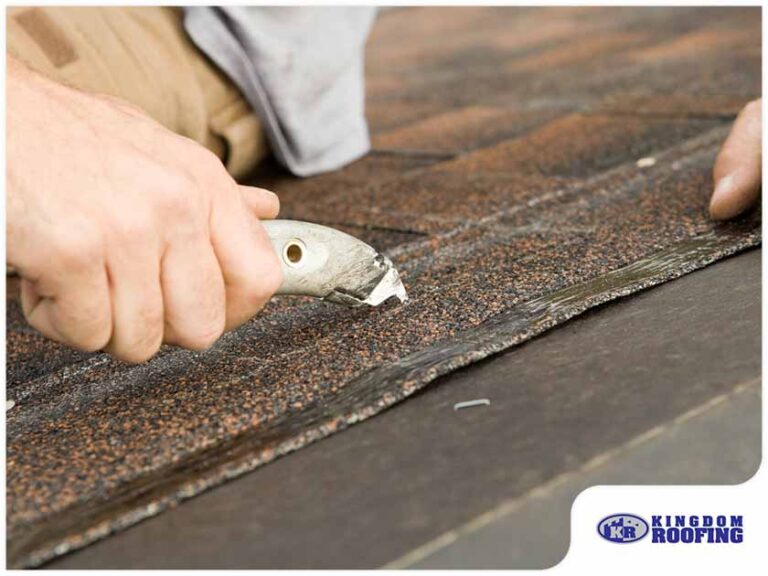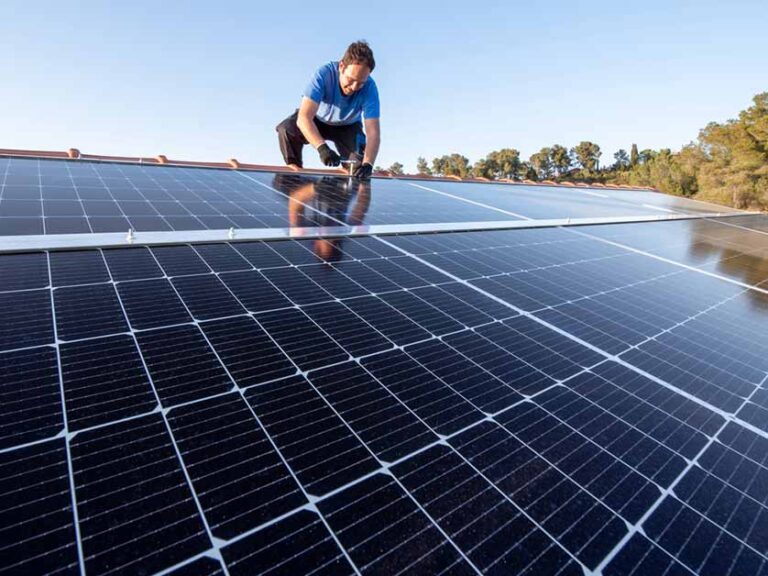A well-constructed asphalt shingle roof has a consistently flat surface, which runs from the ridge of the roof down to overhangs near the gutters. An uneven appearance, unfortunately, is an indication of a serious problem that must be addressed as soon as possible. One particular issue to watch out for is asphalt shingle blistering. Understanding what causes blistering and how it can be prevented helps in extending the life span of the whole roofing system. Trusted roofing contractor [company_name] explains everything you need to know about blistering.

Asphalt Shingle Blistering
Blistering occurs when asphalt shingles lose their adhesion with the roof underlayment and decking, creating pockets that result in an uneven roof surface. Roofers consider it a cosmetic issue, so long as the affected shingles don’t pop. Otherwise, the roof’s risk of deterioration increases.
Asphalt shingle blistering causes the protective granules on the surface of the roofing material to loosen and fall off. Eventually, the matting becomes exposed. At this point, the affected shingles are unable to protect against the sun’s ultraviolet (UV) radiation and moisture due to the speed of erosion. Roofing experts can’t simply patch them up, so they replace the shingles instead. However, a roof replacement is recommended if the blistering occurs on a significant section of the roof’s surface.
Possible Causes of Asphalt Shingle Blistering
Blistering in asphalt shingle roofs can be caused by a few factors, including the following:
-
Improper installation. Signs of poor roof installation aren’t always apparent, but when you see blisters, it could mean that the roofers didn’t do a great job of securing the shingles. Workers may have made wrong measurements that resulted in gaps on the roof surface where the blisters can develop, or used low-quality shingles as a way to reduce costs.
-
Inadequate attic ventilation. During an inspection, roof repair services professionals make sure a roof has enough ventilation to ensure the structure’s longevity and performance. Promoting air circulation within the attic helps minimize issues such as premature deterioration, mold growth and rot. Good ventilation also plays a role in keeping households comfortable year-round. Without proper ventilation, warm, humid air can’t escape from the attic, increasing the temperature of not only that space but also the roof itself. This, in turn, heightens the risk of asphalt shingle blistering.
-
Presence of moisture. Blistering can also occur as a result of moisture trapped between the layers of the asphalt shingles due to manufacturing errors. As the affected shingles become exposed to direct sunlight, the surface slowly rises as the moisture heats up, creating blisters.
-
Wear and tear. An asphalt shingle roof that’s more than halfway to the end of its life span tends to become more susceptible to damage. Years of exposure to strong winds, hail and moisture can expedite the natural weathering of the roof. As the system ages, the development of blisters is more likely to occur, requiring a closer inspection by a trusted roof repair services contractor.
Determining Blisters on Asphalt Shingles
A quick visual inspection can help determine whether a roof has issues that need immediate attention. Some homeowners, however, fail to distinguish between blisters and hail damage. One way is by checking out the damage pattern on the roof surface, as well as the slope and direction of the affected shingles. The damage may either be scattered throughout the roof or isolated in only one section.
Foot traffic may pop the blisters and cause the affected area to erode, but some areas may have the raised blisters intact. A more uniform damage pattern may also be identified on the roof surface, indicating the wind’s direction during a hailstorm. To be sure about the type of damage and its severity or extent, work with a reliable roofer who can perform a thorough inspection of your roofing system.
Preventing Asphalt Shingle Blisters
The good news is that the problem of asphalt shingle blistering is totally preventable. Your best defense against this common issue is to choose a dependable roofing contractor. Here’s what you need to know when looking for one:
-
Legitimate credentials. In Florida, contractors who want to provide roofing services must have a license, which is issued to workers 18 years of age or older who have at least four years of experience in roofing. Also, make sure that the roofer you hire has coverage for workers’ compensation and general liability insurance.
-
Manufacturer-certified. A roofing company is worth hiring if workers have received certification from the leading industry manufacturers. Because they meet a brand’s rigorous requirements, manufacturer-certified roofers are able to offer and install top-tier products backed by warranties. You can rest assured that you’ll be working with a team of experienced professionals who have the necessary skills and knowledge to ensure your new roof can withstand the elements.
Keeping your new roof in great condition is also crucial in preventing asphalt shingle blisters. Scheduling routine maintenance with your chosen roofing contractor helps extend the serviceable life of your investment, heading off potential issues that might result in costly repairs if not addressed promptly. Not only that, but proper maintenance also helps you to be more at ease knowing your roof is protecting you, your family and your home against harsh weather conditions and damage.
Whatever your roofing needs, [company_name] has got you covered. Built on integrity and carried on outstanding service, quality and hard work, our company is the best choice for your next project. We continue to protect thousands of families across South Florida with products and services developed specifically to withstand the conditions of this area of the United States. Our expert team of installers, consultants and customer-service professionals are ready to protect your investment for years to come through our many services, including roof replacement, maintenance and repair.
Give us a call at (941) 217-2411, or fill out our contact form to schedule a free, no-obligation inspection and estimate. We look forward to hearing from you!



